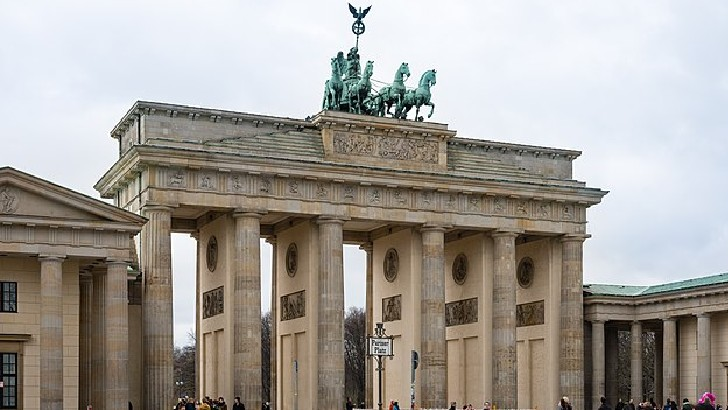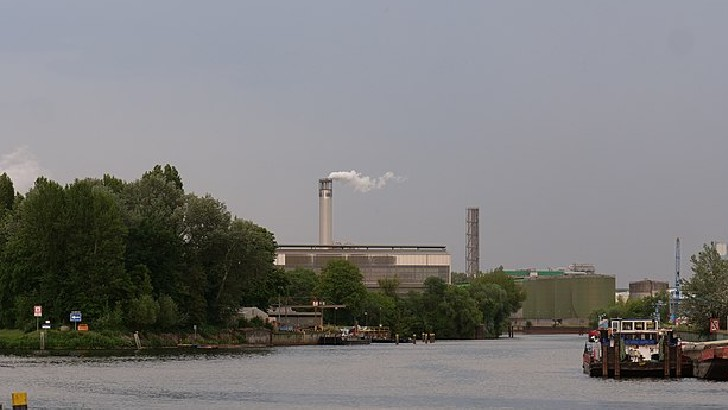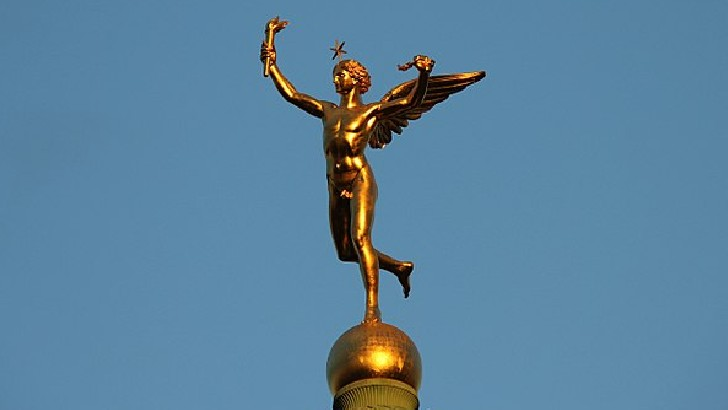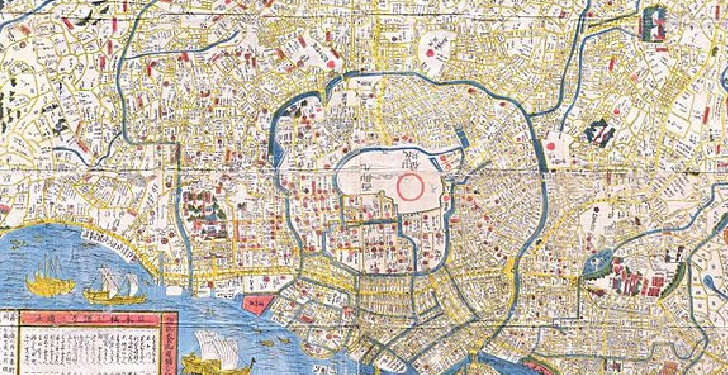This test is for you if you frequently travel or plan to visit several cities and countries. Find out how many questions you can correctly answer by taking our entertaining travel quiz.
The Prussian Kings ordered Museum Island to be erected between 1830 and 1930. What is the number of museums there?
5
Museum Island is a complex on the northern extremity of Berlin’s Spree Islands that is one of the city’s most popular attractions and one of Europe’s most important museum sites. The Alte, Neues, Alte Nationalgalerie, Bode, and Pergamonmuseum are the five museums that make up the collection.
The name Berlin comes from the original inhabitants of the region’s West Slavic language. What does Berlin mean?
“Swamp”
While Germanic tribes dominated the Frankish Realm, Slavic tribes dominated the lands east of the border rivers. As a result, the majority of cities and villages in northeastern Germany have Slavic language names. For example, the name Berlin might be derived from the old Polabian root “berl-birl,” which means “swamp.”
When was the Berlin world clock, also known as the Urania clock, built, and when was it declared a historically and culturally significant monument in 2015?
1969
On Berlin’s Alexanderplatz, the World Clock is a massive turret-style clock. It has risen in prominence as a tourist attraction and meeting point since its erection in 1969. In July 2015, the German government recognized the clock as a historically significant monument.
What river goes through the heart of Berlin’s ancient center city and is a tributary of the Havel?
Tokyo became Japan’s capital in 1869. What does the English term “Tokyo” mean?
Eastern Capital
Emperor Meiji moved to Edo in 1869, and the city was renamed Tokyo after him (meaning “Eastern Capital”). Tokyo was already the country’s political and cultural center, and the emperor’s palace elevated it to de-facto imperial capital status.
The Berlin Wall memorial commemorates Berlin’s partition and the resulting suffering. What year was the memorial commissioned?
1998
The Federal Republic of Germany and the Federal State of Berlin commissioned the Berlin Wall in 1998. A Chapel of Reconciliation, a Berlin Wall Documentation Centre, a 60-meter-long section of the former border, a window recollection, and a tourist center are among the attractions.
Name the world’s largest wholesale fish and seafood market, which was destroyed in the great earthquake of 1923 and relocated in 2018.
The Tsukiji Market
The Tsukiji Market was built in 1935 to replace one that was destroyed by the Great Kanto earthquake in 1923. The market was in the Tsukiji region of downtown Tokyo, between the Sumida River and the upscale Ginza shopping district.
Which of the following rivers flows into Paris around Stade Charlety, except the Seine?
Bievre
The Bievre is a 36.4-kilometer-long river that enters the Seine in Paris. Its name is sometimes traced to the old French word “bievre,” which means “beaver,” however there is no evidence that beavers ever lived in the area.
What Tokyo neighborhood has a name that means “six trees” and is recognized for its dynamic nightlife and development area?
Roppongi
The term “Roppongi,” which appears to have originated about 1660, means “six trees” since the area was once defined by six large and ancient zelkova trees. They were unfortunately destroyed during World War II.
What is the humorous nickname for the 2015 skyscraper at 20 Fenchurch Street?
“The Walkie-Talkie”
The 20 Fenchurch Street skyscraper, built by Rafel Violy and costing over $200 million, has earned the moniker “The Walkie-Talkie” due to its distinctive construction. The tower’s original height was over 656 feet, but it was reduced owing to concerns about its aesthetic impact on nearby St Paul’s Cathedral and the Tower of London.
What was the name of the Roman city that would eventually become Paris?
Lutetia
Lutetia was the forerunner of modern-day Paris and the home of the Gallix tribe the Parisii. Neolithic dwelling has been identified around the present site.
Name the mid-seventeenth-century Shinto temple that is considered one of Japan’s most historically significant shrines.
The Hanazono Shrine
The Hanazono Shrine is a small, unassuming structure in the heart of Tokyo’s Shinjuku neighborhood. This Inari shrine, built by the Hanazono family during the Edo era and dedicated to the androgynous deity of fertility and success, is a favorite place for entrepreneurs to pray for prosperous businesses.
The colossal Paris monument known as the July Column is located in which historic square?
Place de la Bastille
The July Column, which stands in the middle of the Place de la Bastille, commemorates the “three great days” of July 27-29, 1830, when France’s King Charles X died and the Louis-Philippe Monarchy was established.
What is the name of the oldest Parisian street in the Latin Quarter?
Rue Saint Jacques
The oldest street in Paris is Rue Saint Jacques. From the Seine riverbank to the Boulevard Saint-Jacques, it travels beside the Sorbonne and the observatory, climbing and descending the hill.
According to legend, the kingdom will fall apart if ravens are not kept at the Tower of London at all times. How many ravens are there?
Six
At the Tower of London, at least six ravens are kept at all times. The British kingdom would fall apart if they were not present, according to folklore. They are under the command of the Ravenmaster, a Yeoman Warder. The Yeoman Warders are responsible for ceremonial duties as well as giving tours of the Tower. Over 2.9 million people visited the Tower of London in 2019.
Tokyo was a little fishing hamlet before becoming Japan’s capital. What was it named before?
Edo
Tokyo, originally known as Edo, became a major political center in 1603 when it became the capital of the Tokugawa shogunate. Edo had risen to become one of the world’s most populous cities, with over one million people by the mid-eighteenth century.
The Anti-Fascist Protection Rampart was the name given to the Berlin Wall by the GDR government. When was it demolished?
1989
A series of upheavals in neighboring Eastern Bloc nations, especially Poland and Hungary, triggered a chain reaction in East Germany in 1989. The Pan European Picnic, in particular, sparked a peaceful process in which the Iron Curtain was largely taken down, the leadership of the Eastern Bloc was put under strain, the Berlin Wall fell, and the Eastern Bloc finally split.
What is the name of Tokyo’s most affluent, fashionable, and rich neighborhood?
Ginza
Ginza is a well-known Tokyo luxury shopping neighborhood with a profusion of internationally renowned department stores, boutiques, restaurants, and coffee shops. Ginza used to be the core of Tokyo’s downtown region, along with Nihonbashi and Kanda.
Left Bank
Following WWII, Paris’s Left Bank area became a hotbed for intellectuals, philosophers, authors, and filmmakers. The phrase “left bank” is still associated with bohemianism, counterculture, and innovation today.
In what year did the devastating Great Kanto earthquake strike Honshu’s main island?
1923
The Great Kanto earthquake struck the Kant Plain on the main Japanese island of Honshu on September 1, 1923. The earthquake lasted between four and 10 minutes, according to multiple sources. The earthquake had a magnitude of 7.9 and occurred deep beneath Izushima Island in Sagami Bay.
Oh oh. You Are Not A Traveller.
Brilliant! You Are a Certified Traveller.
[giveaway id=12098]


























